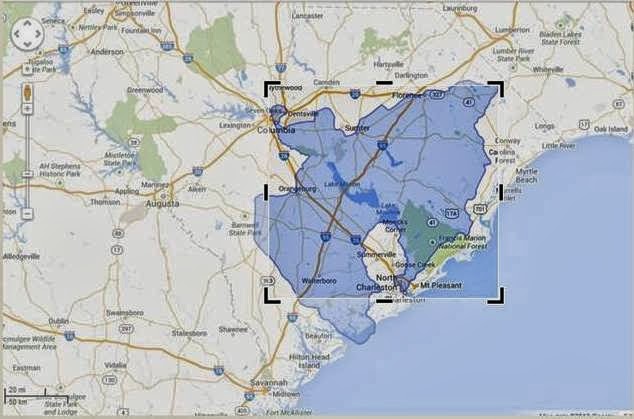If you have experience posting photos on some websites, you know that the photos have to be a certain size and shape and have received assistance in meeting that requirement by the appearance of a little cropping box, of predefined size and shape, that can be moved around on the original image to select the part of the photo that you want to appear on the site.
Gerrymandering of congressional districts is a little like cropping except that there is no predefined size and shape of the final product. Size and shape are generally determined by population make up and are often selected to provide “safe” districts for one party or the other. In the midlands of South Carolina, we have a heavily gerrymandered district designed to assure that Congressman James Clyburn can be re-elected as long as he keeps choosing to run.
I have read the argument that the real purpose for the safe Clyburn district was to keep Clyburn voters out of other districts and make them safe for representatives who are almost certain to disagree with Congressman Clyburn on everything. I don’t know what the truth is and really don’t care because neither strategy should be considered fair and reasonable or even legal.
Below is a map of the Clyburn district. Folks who know South Carolina will recognize that this district includes the low income areas along North Main and Farrow Road and along Bluff Road, where the bulk of Home Works of America efforts repairing the homes of elderly low income folks is concentrated, and carefully excludes the more prosperous Forest Acres and Blythewood sections and almost all of conservative Lexington County. The second map shows the detail of the little pimple in Columbia within which, incidentally, I reside.


Also included in Congressman Clyburn’s district are the “Corridor of Shame” west of I95 and carefully excluded are the upscale Summerville pimple and the more prosperous beach fronts from Myrtle Beach down through Kiawah and Hilton Head Island. Congressman Clyburn does have beach access via Edisto Island. All that prosperous coastal property, by the way, is in District One, once represented by Congressman Mark Sanford, more recently by appointed Black conservative Senator Tim Scott, and now, again, by Congressman Sanford. It is a safe seat for conservatives, for sure.
I can’t help but believe that the American people would be better represented in Congress without all the gerrymandered “safe” districts. Each representative should be forced to deal with the concerns of a broad cross section of folks and not just march ideologically lockstep without even having to think. Rather than just grumble about the sorry situation, here is my proposal for solving the problem:
Let’s use the cropping principle for setting up district lines. South Carolina has 4.7M people and seven Congressional Districts, so let’s agree that each district must have at least 600,000 but no more than 700,000 residents. Let’s agree that all districts must be rectangular in shape with borders running north-south and east-west. Below is an example with a little cropping box sitting right on top of Congressman Clyburn’s district. My suggestion, then, is that the redistricting powers that be can move this little box around anyway they want to and change its dimensions anyway they want to so long as it remains rectangular, except where it touches state borders, and contains the required number of people and so long as seven such districts can be constructed to cover the entire state. Now that would be a fun puzzle to solve, would eliminate or greatly reduce the kind of partisan gridlock we are currently observing in Washington, and would make everybody but the Representatives currently occupying “safe” seats happy. And there is no reason for us to put any effort in trying to make those folks happy.

Here’s an afterthought: Don’t worry about this happening if you don’t like it. It would take an act of congress to push it through.
Originally Published 10/4/2013